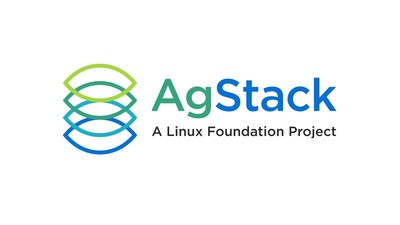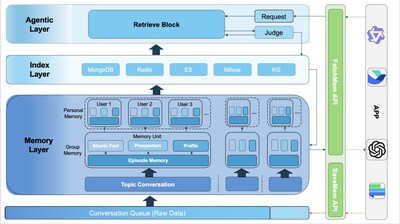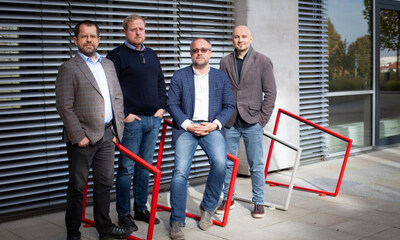The Linux Foundation’s AgStack Project to Build World’s First Global Dataset of Agricultural Field Boundaries
Press Releases
Dec 20, 2022
New Code Base Hosted By AgStack Will Utilize Machine Learning and Artificial Intelligence to Create, Curate, and Manage Global Field Boundaries Data For Public Use
SAN FRANCISCO, Dec. 20, 2022 /PRNewswire/ — The Linux Foundation, a global nonprofit organization enabling innovation through open source, today announced that its AgStack project will host a new open source code base, alongside a fully automated, continuous computation engine, to create, maintain and host a global dataset of boundaries’ “registry” for agricultural fields to aid in such things as food traceability, carbon tracking, crop production, and other field-level analytics.
The contributed code is based on the research by Dr. Sherrie Wang, Dr. Francois Waldner and Professor David Lobell at The Center on Food Security and the Environment at Stanford University, and funded by organizations including the NASA Harvest Consortium.
AgStack’s Asset Registry dataset, the first of its kind in the world, is built and continuously updated using data from satellites and actual field registrations that contain information on boundaries, not ownership, which will then train machine learning models to ascertain more boundaries.
Precise knowledge of field boundaries can help farmers, agricultural companies, and the public sector to monitor and manage crop production, study management practices (crop rotations, cover cropping, tillage, irrigation), determinants of productivity, pest and disease spread, and species diversity. By sharing reusable agricultural data, new insights can also be gleaned for global food security research and innovation.
Crop field boundaries are the fundamental unit of addressing such datasets in agriculture across the globe, but they’re rarely available as a public dataset, especially in smallholder regions. According to the FAO, there are over 1.5 billion hectares of cropland in the world (approximately 12% of the global land surface). Since the average field size of over 80% of the farms is less than one hectare, this computes to over 1.2 billion active field boundaries – constantly changing through crop seasons.
By leveraging computer science and artificial intelligence, members will create, curate, and maintain global field boundaries as an open source digital public good available for anyone to use. The project has the potential to unlock the next revolution of digital agri-services in public and private sectors, especially for smallholder farmers.
“Creating and maintaining a global, inclusive, neutral and company-agnostic dataset has been challenging due to a host of reasons,” said Dr. Wang, who will continue to contribute research as an incoming Assistant Professor at MIT in the Department of Mechanical Engineering and the Institute for Data, Systems, and Society. “Now is the time to do this. We have deep learning and satellite imagery to efficiently delineate crop fields at planetary scale. The next steps are to scale the algorithm, release the dataset as a public good, and maintain and improve it over time.”
The research seeks to enable all types of agricultural data analysis and services by bridging computing and AI research expertise with a global network of partners in an open source software ecosystem, which is what the Linux Foundation is set up to do.
“We think that a public field boundary dataset can help turbocharge a lot of smart people and businesses focused on improving agriculture and food security around the world,” said Lobell, who hosted the original research as the Gloria and Richard Kushel Director of the Center on Food Security and the Environment at Stanford University and the Benjamin Page Professor of Earth System Science. “We’re excited to help bring this dataset to life.”
All code will be contributed under an open source license and will be governed by the AgStack community within the Linux Foundation, using open source and permissively licensed tools and processes.
“We are delighted to host this groundbreaking research and to work with the University community to create machine learning models and approaches that can enable this powerful global dataset,” said Sumer Johal, Executive Director of the AgStack Project at the Linux Foundation. “This code contribution will launch an ecosystem-wide invitation to stakeholders in the private and public sector to ensure the availability of these data as a neutral, trusted, and secure public good. Together we can help remove the blockages around working with field boundary data in a community-driven way.”
About The Linux Foundation and AgStack: The Linux Foundation is the world’s largest non-profit connecting global technical experts, and providing them with a neutral and trusted platform to develop open source projects. Founded in 2000 as the home of the Linux Kernel, the Linux Foundation has grown to host hundreds of open source projects, with a community spanning 2,950+ members, 540,000+ contributing developers, and 19,000+ contributing companies. AgStack is an open source digital infrastructure project for the world’s agriculture ecosystem, under the umbrella of the Linux Foundation.
Media Contact:
Noah Lehman
![]() View original content to download multimedia:https://www.prnewswire.com/news-releases/the-linux-foundations-agstack-project-to-build-worlds-first-global-dataset-of-agricultural-field-boundaries-301704612.html
View original content to download multimedia:https://www.prnewswire.com/news-releases/the-linux-foundations-agstack-project-to-build-worlds-first-global-dataset-of-agricultural-field-boundaries-301704612.html
SOURCE The Linux Foundation





